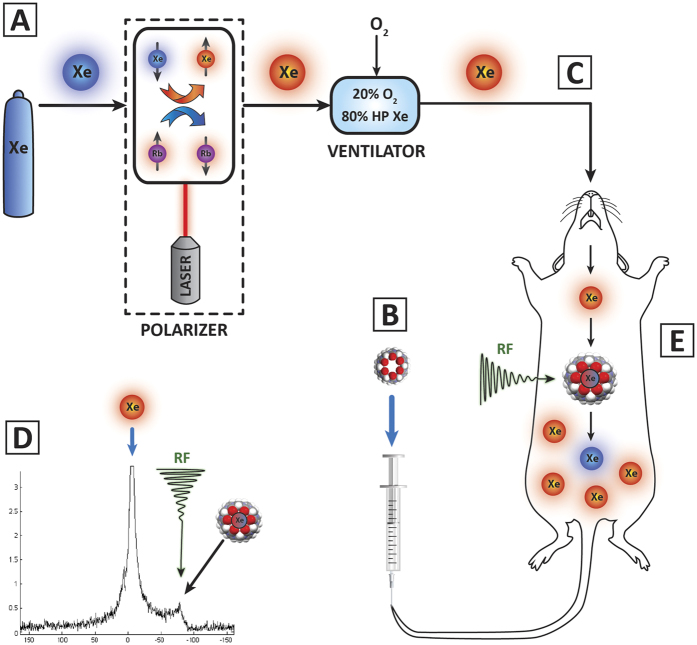Figure 1.
(A) Xenon is polarized using Spin Exchange Optical Pumping (SEOP). In SEOP, xenon flows into a chamber containing rubidium gas vapor in the presence of a magnetic field. The rubidium is excited by a laser. Xe colliding with the Rb results in a spin exchange, whereby a greater proportion of Xe atoms are in the lower energy spin state (red). (B) The CB6 solution is intravenously injected into the tail vein and allowed to bio-distribute. (C) The rat is mechanically ventilated with a mixture of 80% xenon/20% oxygen. The rat inhales HP Xe gas which enters the vasculature via the lungs. The HP Xe interacts with the CB6 cage, diffusing in and out of the cage. Figure created by Craig Christoff of Cryodragon Inc. (D) A HyperCEST saturation pre-pulse is applied at the chemical shift frequency of the Xe-CB6 complex (123.4 ppm), depolarizing the Xe in the cage (blue). Because of the exchange of xenon in and out of the cage molecule there is in a reduction of signal in the dissolved reservoir. (E) During acquisition, an RF pulse is applied at the chemical shift of Xe-CB6, depolarizing only the Xe within the CB6 cage. As the depolarized xenon exchanges out of the CB6 cage, it reduces the pool of polarized (detectable) Xe atoms (red). The reduction of MR signal compared to a control signal indicates the presence of CB6 cages.

